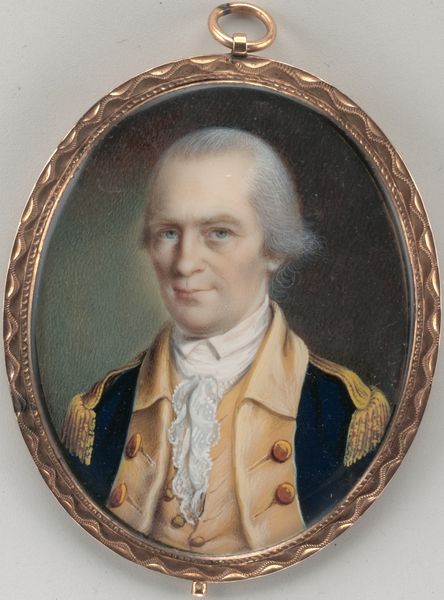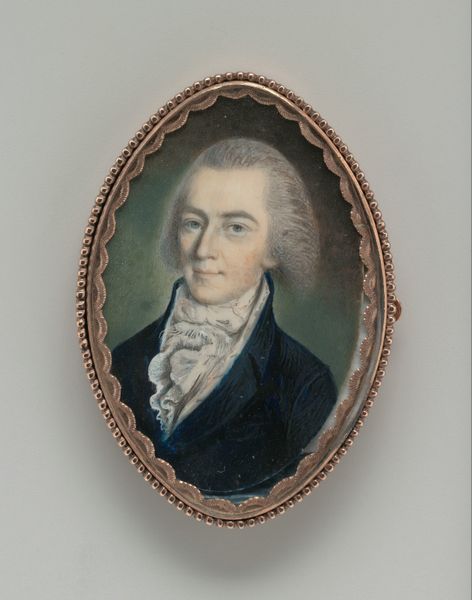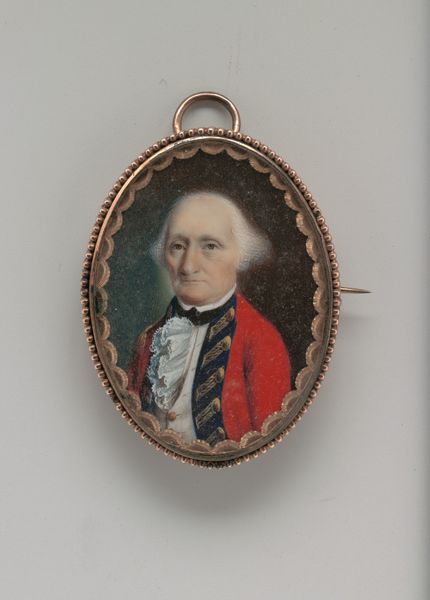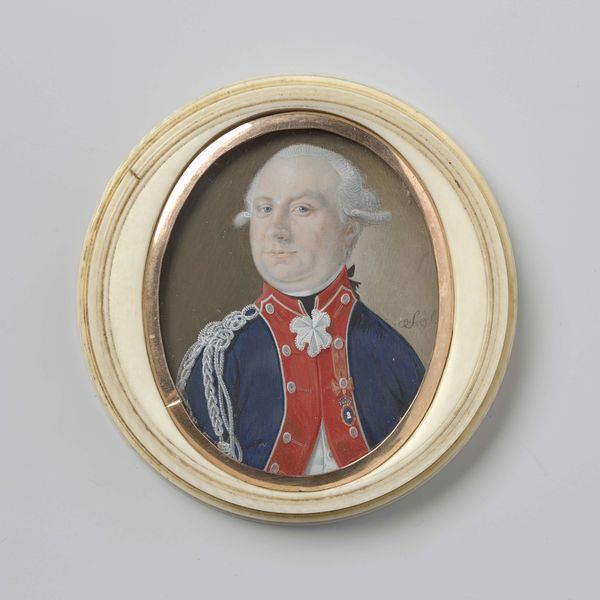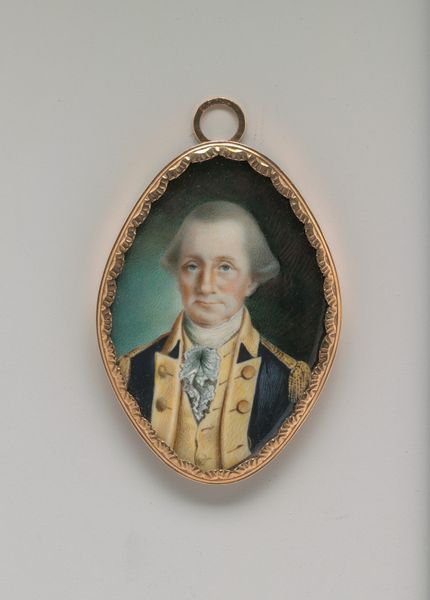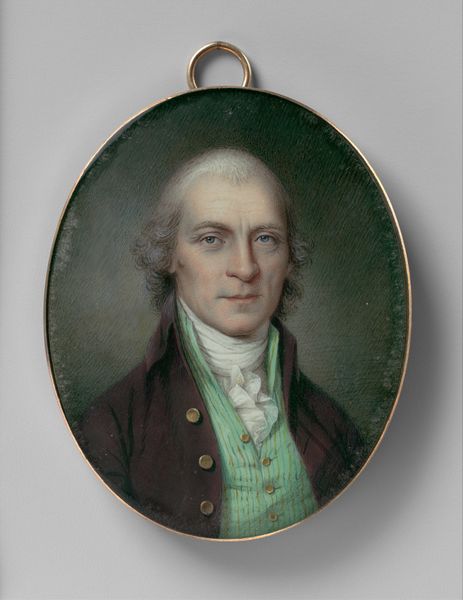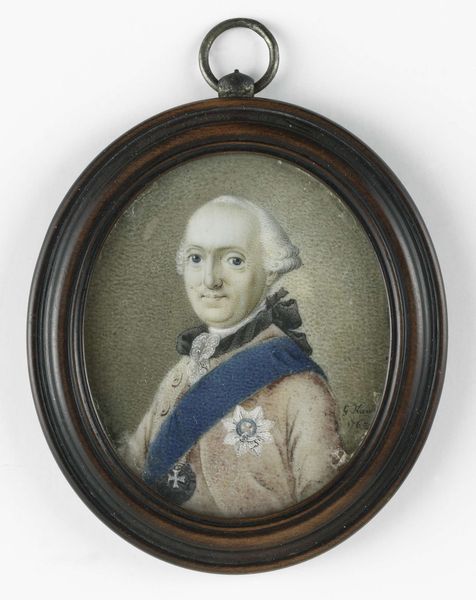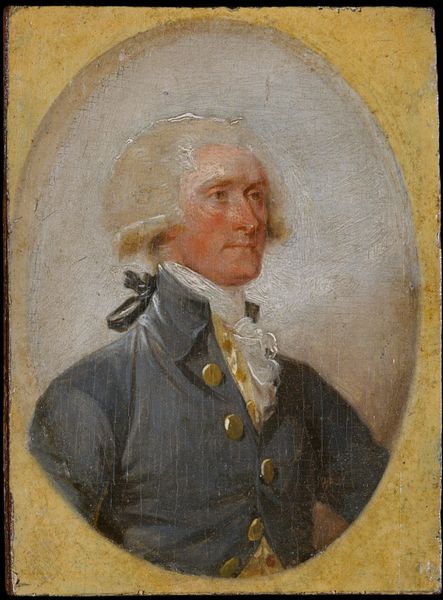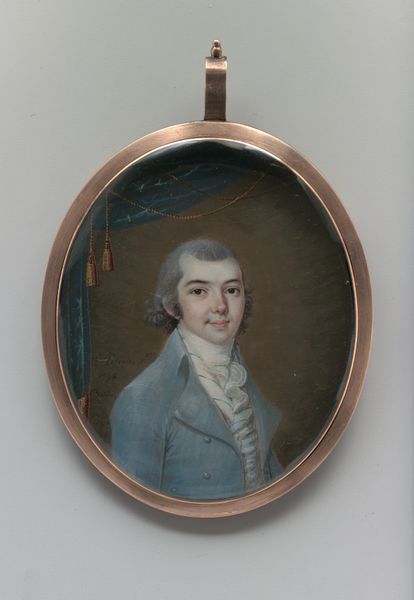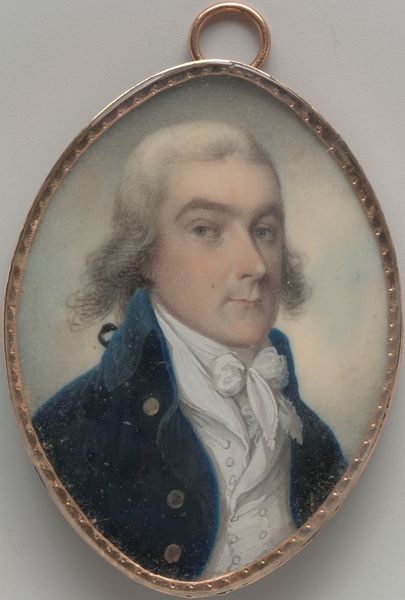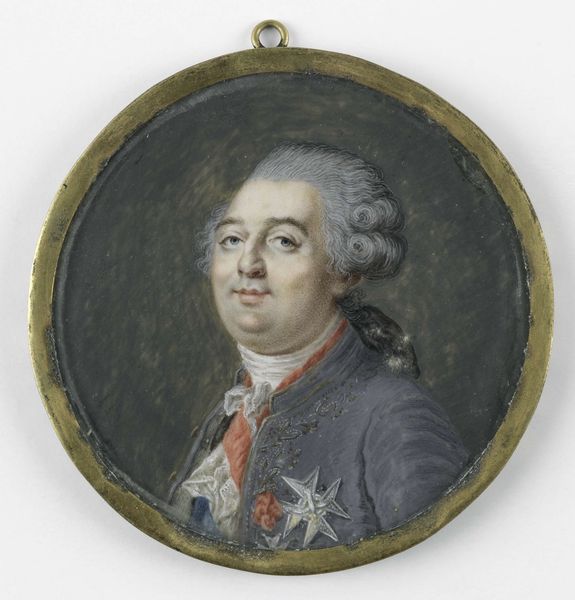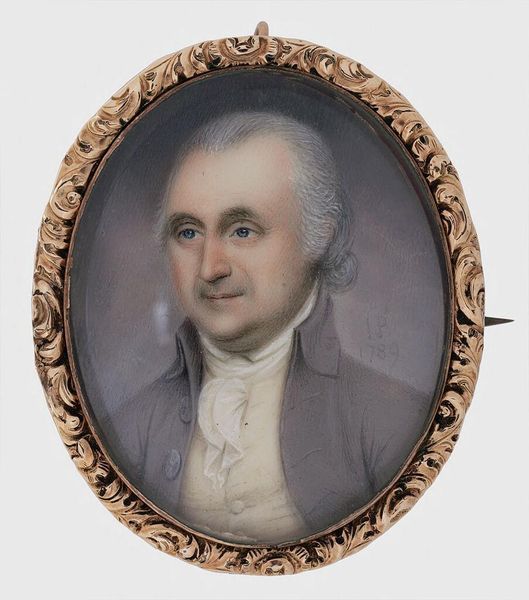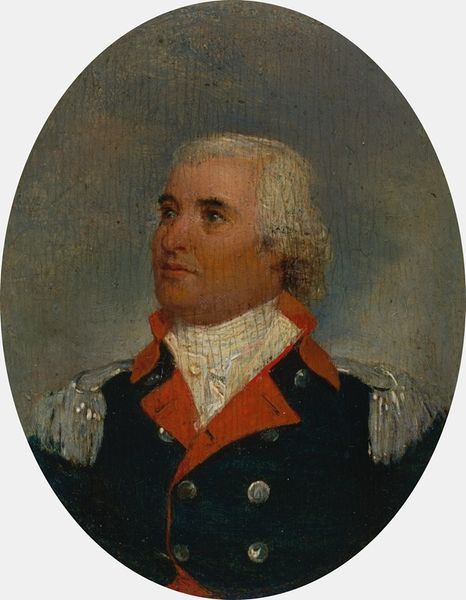
oil-paint
#
portrait
#
neoclacissism
#
oil-paint
#
oil painting
#
history-painting
#
miniature
Dimensions: 2 7/8 x 2 1/8 in. (7.3 x 5.2 cm)
Copyright: Public Domain
Curator: Today we are looking at a portrait miniature of General Henry Knox painted by Charles Willson Peale in 1778, dating it to the early years of the American Revolutionary War. The painting, rendered in oil paint, now resides at the Metropolitan Museum of Art. Editor: My initial impression is that of determined restraint. The small scale feels so intimate, and yet there’s a formal reserve about him that speaks of duty. It almost feels like a captured moment, ready to be deployed. Curator: Yes, portrait miniatures served several crucial roles in the 18th century. Beyond mere likeness, they functioned as potent symbols of status and connection, especially important in a young nation forging its identity. Think about how powerful it was for families, and allies, to carry a representation of these revolutionaries, what that does for cultural memory. Editor: And Knox himself cuts quite the figure. That dark blue jacket with red facings—the colors pop, signifying power and position, while the silver epaulettes mark him as an officer. What does this colour story tell us? It is so obviously coded. Curator: Absolutely. Peale was incredibly intentional in his artistic choices, crafting a visual narrative that aligned with the values and aspirations of the American Revolution. As a high ranking officer in the Continental Army who would later become the United States Secretary of War, Knox had to be visualized appropriately. Editor: His expression certainly communicates resolve. What a difference it makes viewing an artwork knowing it’s tied to historical realities of revolution. Each emblem or colour nuance echoes not just aesthetic preferences, but deeper rooted social and political motives. Curator: It truly prompts consideration. Peale's portrait not only immortalizes General Knox but encapsulates the era's ideals and anxieties regarding power and identity, particularly amid such monumental historical shifts. The miniature invites reflection upon the intertwined fates of image, individual, and nation. Editor: It highlights how symbols can create belonging to a cause. Looking at the miniature again, one can’t help but think about how it once circulated as an object of intense, personal significance. I'm going to remember that!
Comments
No comments
Be the first to comment and join the conversation on the ultimate creative platform.
